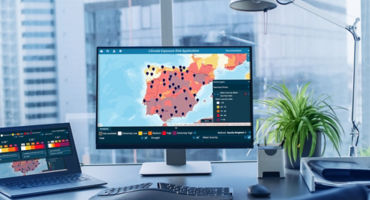Our Investment Strategy team has generated capital market assumptions (CMAs), including return, risk and correlation metrics, for many years. They play an important role in our asset allocation process and are subject to ongoing research and enhancements. In this paper, we detail one of the most significant changes in our CMAs to date: a comprehensive effort to integrate climate-related inputs, including physical and transition risks, into the process.
We had a simple but important philosophical starting point for this work: we believe climate change impacts investment outcomes. It impacts macro-level variables, such as GDP growth; company-level dynamics, such as costs and future company activity; and decisions about regulation and fiscal policy. These, in turn, all impact asset prices.
The goal of this paper is to outline our approach to integrating climate change and its complex and wide-ranging effects into our CMA process, an effort conducted in collaboration with our Climate and ESG teams, as well as our partners at the Woodwell Climate Research Center. Specifically, we offer an overview of our CMA process, our climate risk methodology and the expected impact of these changes at the asset-class level.
Our capital markets assumptions process and how we aligned macro, fundamental and climate variables
Our CMA process follows a classic building-block approach in which the components of total return — income, growth and valuation — are forecast independently. We use a number of forecast horizons, but for the purposes of this paper, we will focus on our intermediate horizon — i.e., 10 years. At the heart of the approach is an assumption that macro variables (e.g., GDP, inflation) and fundamental variables (e.g., EPS growth, credit losses) each have a bearing on total return.
The macro channel is often the most direct, with any deviations in the inputs flowing immediately through into our CMAs. For example, lower real GDP expectations as a result of climate variables will decrease our estimates of terminal yields for fixed income and revenue growth for equities. The fundamental channel is more nuanced and complex, and requires a larger set of assumptions — to estimate the impact of climate variables on corporate profit margins or credit default/recovery rates, for instance.
With this as our starting point, we first needed a framework for thinking about the climate inputs that should be incorporated into the CMA process. As shown in Figure 1, we have attempted to quantify and incorporate both transition and physical risks.
- Transition risk includes risks arising from the decarbonisation of the economy, such as the impact of policy/regulatory changes (carbon pricing, subsidies, etc.), technological disruption (the move to renewables, electric vehicles, etc.) and societal pressure and behaviour.
- Physical risk concerns changes to the physical environment brought on by climate change, including chronic risks (long-term shifts in climate patterns, temperatures, sea level, etc.) and acute risks (risks that are event-driven and increasing in severity, such as floods, hurricanes and wildfires).














